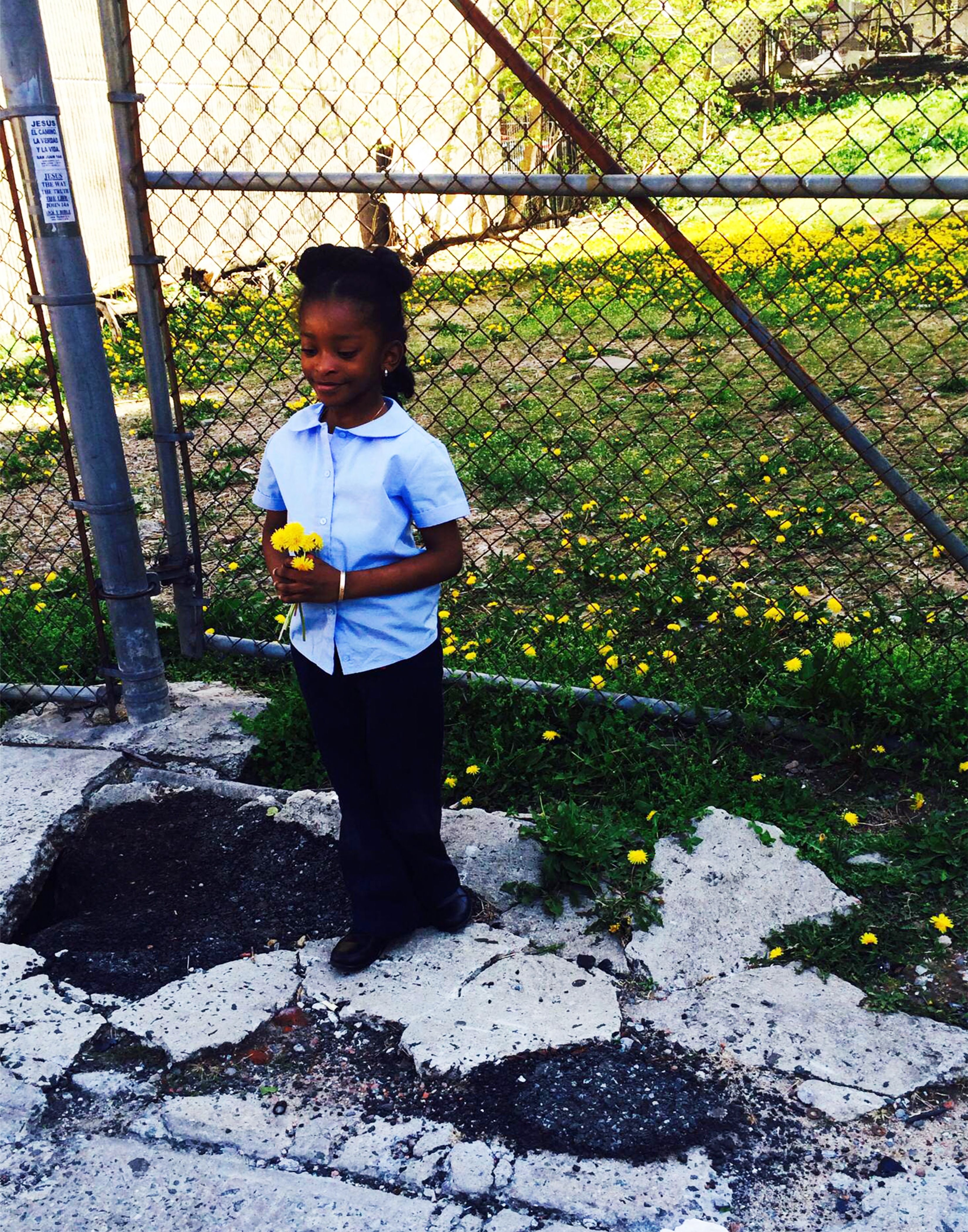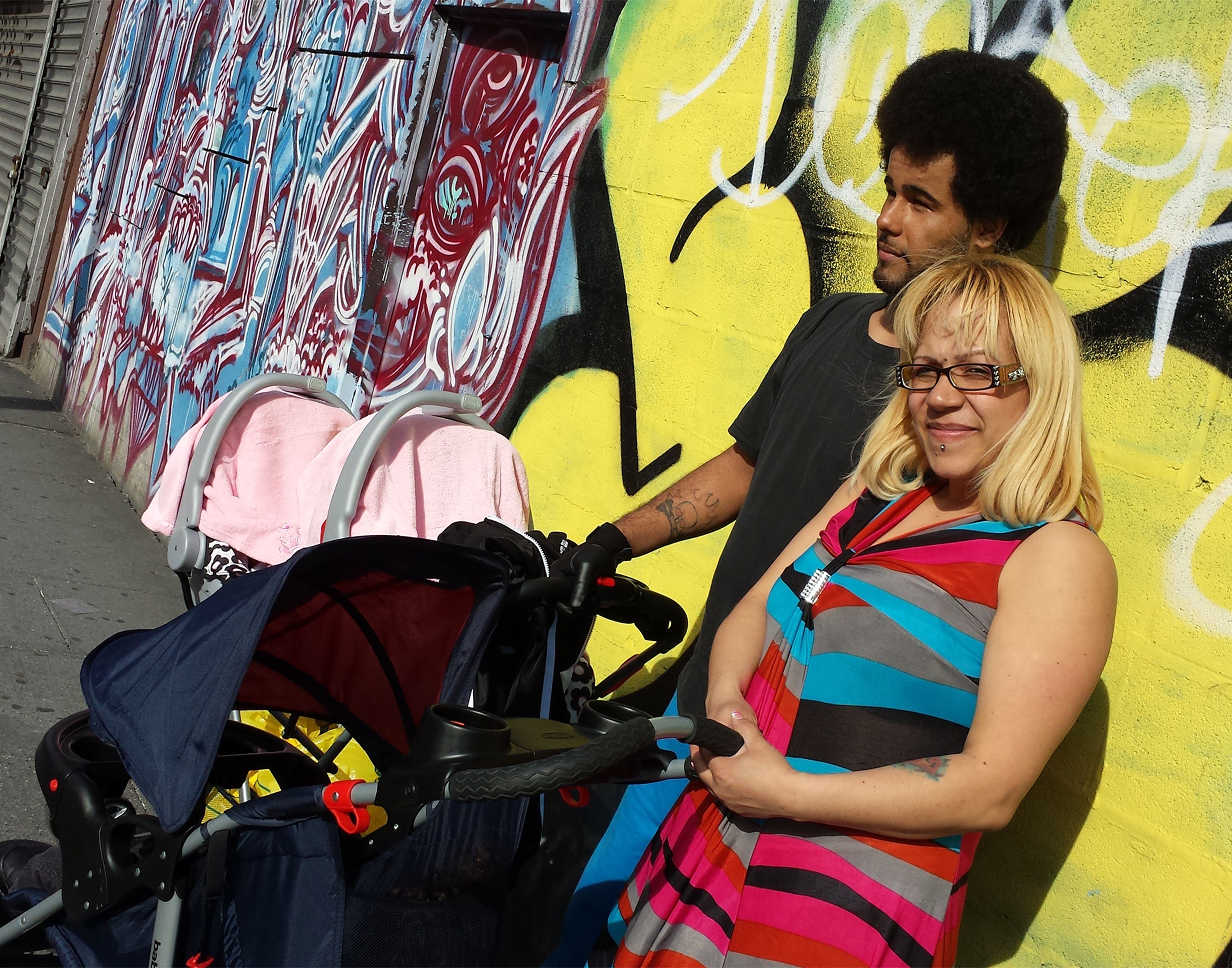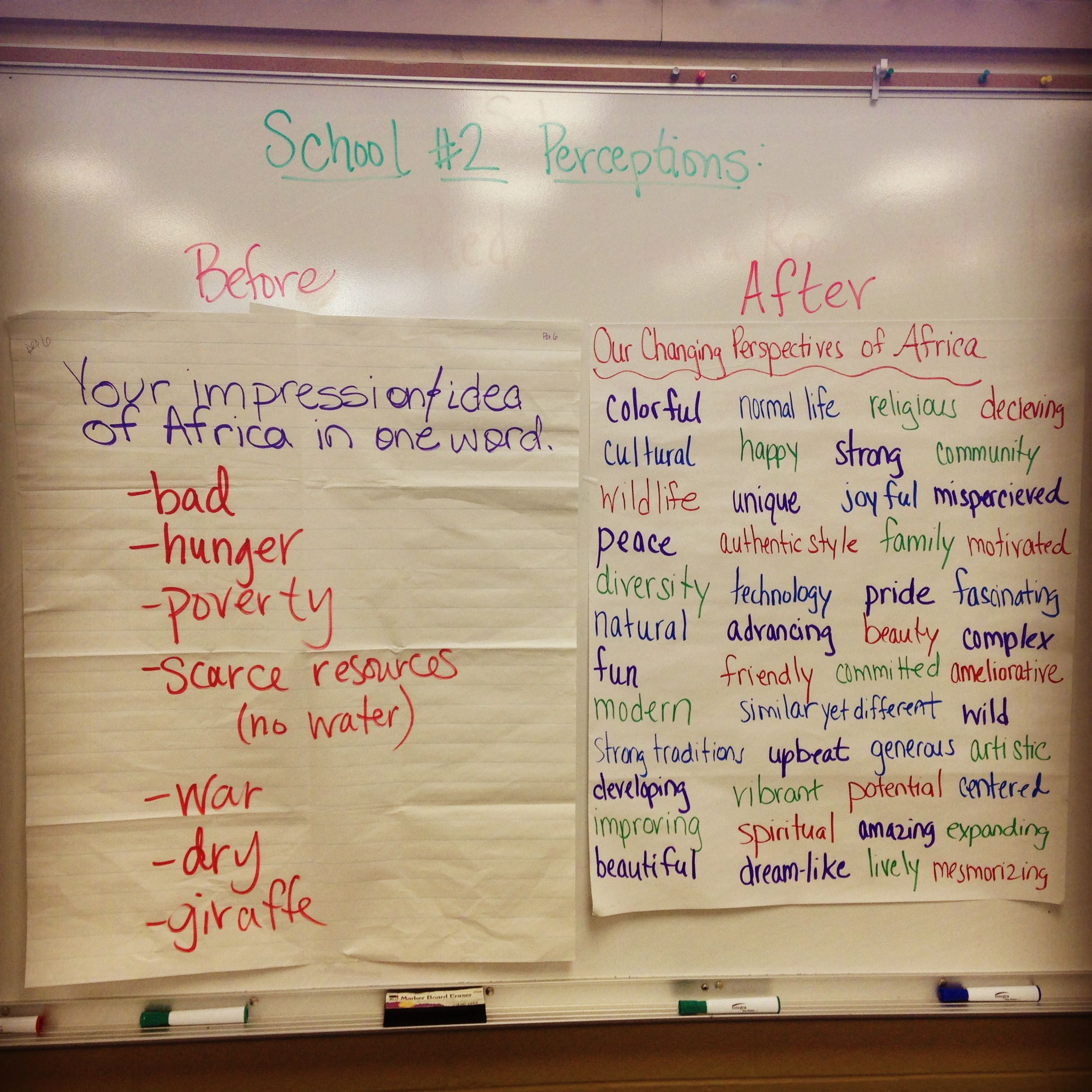When the Pulitzer Center brought us to Chicago schools in December 2013 to present the Everyday Africa project, the students we met were engaged in our discussion on media stereotypes, interested in hearing about our experiences in Africa, and probably pretty happy to be out of their regular class. But what really excited them—what made them sit, wide eyed, on the edges of their seats—was when we mentioned Instagram. There is no better way to gain credibility in middle and high school classrooms today than to brag about your 60,000 followers. And we recently hit the 100,000 mark!
What began as a simple project, making cell phone photos of daily life in Africa while traveling on other assignments, has grown into a full-blown movement we never could have anticipated. Everyday Africa has been featured by National Geographic, The New York Times, and The New Yorker, to name just a few. It has exhibited at Mexico’s PhotoFest, New York’s Lincoln Center, and will be at Brooklyn’s Photoville this September. In recent months, it has inspired similar projects worldwide: Everyday Middle East, Asia, Latin America, USA, Iran, Egypt, Jamaica, and many others, all with the shared goal of countering media stereotypes by showing shared commonalities. But we are perhaps most proud of our numbers on Instagram, and the high level of engagement and conversation from our followers—and of our increasing presence in the world of education.
So, when the time came to think about a project website, to be developed by Uncharted Digital, we knew it had to be both dynamic for all and useful for students and teachers in the classroom—we knew we had to keep in mind the great success of Instagram, and try to build on that functionality. And we also felt it was necessary to build a site that allowed us to look beyond professional photographers’ idea of what “everyday Africa” means, and incorporate contributions from our followers.
The main elements of the new website that we have found useful in our classroom pilot programs have been the ability to perform keyword searches, to search by country, and to showcase images taken by our followers—a growing and dynamic archive in its own right, and compelling evidence that Everyday Africa has had a profound impact on the ways in which others photograph their own communities. In our pilot program with The LAMP in the Bronx we used the new website to allow students not only to satisfy their own curiosities about imagery from different countries, but also to reinforce the idea that cellphone photography can be a powerful tool when representing one’s community. Students that came to class with preconceived ideas of what life in a certain country must be like were quickly able to use the website to get a more accurate representation.
In photographing their community to create an Everyday Bronx feed modeled on Everyday Africa, the students showed time and again that they not only understood our mission, but had embraced it and were applying it to their own work. Two examples are Georgianna Oyola and Isis Negron, 8th graders at Immaculate Conception School who were among our most enthusiastic participants. “People think the Bronx is dangerous and full of gangs, but those are unfair stereotypes,” said Isis in class. “There are happy families here too.” Georgianna had this to say: “I wanted to show that there’s more to the Bronx than garbage—you can find cute kids and flowers, too.”
The 16 Immaculate Conception School seventh and eighth graders that participated in our pilot program showed noticeable engagement with Everyday Africa (and the Everyday Bronx program that we built together) over the course of the eight weeks. While some of that engagement was thanks to the classroom talks, activities, and hands-on photography we engaged in, a substantial portion of it was directly linked to the students’ enthusiasm related to the project’s online presence. Students had the opportunity to explore the website in various levels of development, allowing us to observe which elements they got the most out of. Based on their experiences, the two most useful aspects were the ability to search the Everyday Africa archive by country, and the opportunity to examine the kinds of images that followers were choosing to hashtag #everydayafrica. The students were also very interested in the kinds of comments that each image had accumulated.
Other positive concurrent observations include the experience of a literature teacher at Choate, in Connecticut, who in the spring term was teaching a handful of African novels and used Everyday Africa to spark a conversation with his students about stereotypes of Africa and the power of imagery. He projected the website in his classroom and used the country search tool to dispel his students’ preconceived ideas of what life was like in the countries about which they were reading.
On a more recent trip to Chicago with the Pulitzer Center, we started off school presentations by asking students, “What word comes to mind when you think of Africa?”, and the results were devastating. “Poverty,” “war,” and even “bad” were common words, as were “giraffe,” “safari,” and “The Lion King.” These reactions show exactly why our project is necessary—and, in the long run, this classroom was also an incredible source of inspiration for us. After revealing what Everyday Africa’s photographers are focusing on and how people in Africa choose to photograph their own communities (via the #everydayafrica hashtag), and after their teachers folded our work into a longer unit on media, the students came back with a new list. This one included “colorful,” “unique,” “strong,” “happy,” and many more positive perspectives.
The next step for the website will be to emulate this experience, locally, in each community, city, or school where our educational programs take place. To help make this happen, an example curriculum, built based on our experiences in the Bronx and Chicago, will be available for free download on the site. In the future, the website itself will be replicable—and once that happens, students will begin photographing and populating their own @everyday__ feed (Bronx, Chicago, etc.), and at the same time will encourage others in their community to similarly hashtag their own images. Africa is, of course, vast, but in smaller settings—schools, neighborhoods, towns, cities—we see incredible potential for the site to become a true tool for engagement within and among communities; a space where people connect, air their grievances, reveal the local issues they deem most important and underreported, and share commonalities.
In these ways and more, our website—and our expanded versions of the website in the future—will be inseparable from our plans to continue to use photography as an educational tool, one that helps combat stereotypes and contribute to quality storytelling the world over.
Check out the new Everyday Africa website here: http://everydayafrica.tumblr.com/
The Everyday Africa website was made possible thanks to the support of the Pulitzer Center on Crisis Reporting and the Open Society Foundations.





